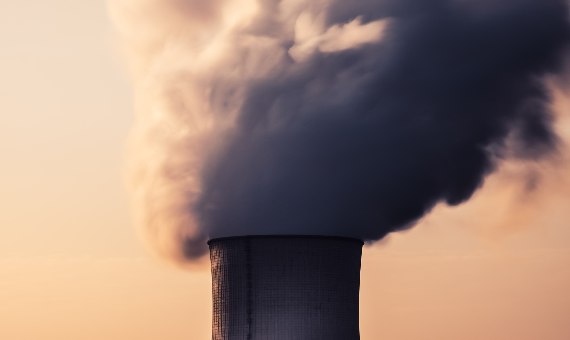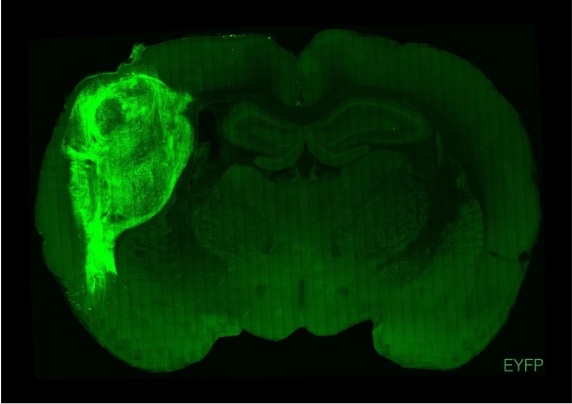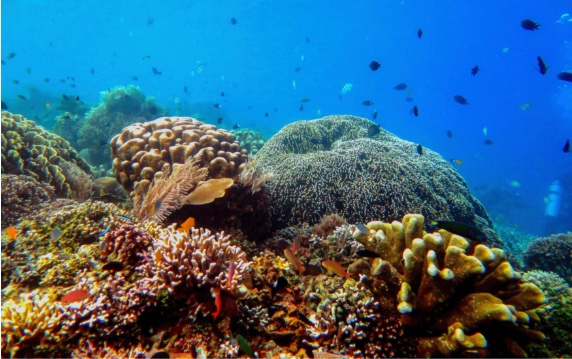With the exception of China, where drastic policies against COVID-19 still linger, in 2022 most of the rest of the world returned to what could be called pre-pandemic normality, even though the pandemic is far from over. The world of science has also been able to get back on track, as research that had been interrupted has resumed and the scientific landscape is no longer dominated by COVID-19. Among the most significant scientific developments in the year just ended, we witnessed the start of the reconquest of the Moon and other technological successes in space, together with worrying news about infectious threats and alarming updates on the state of the Earth’s climate and biodiversity.
-
Towards the reconquest of the Moon
Since 1972, no spacecraft built to carry humans had escaped from low Earth orbit. In December of that year, the Apollo 17 mission marked an end to the manned exploration of outer space to usher in a new era in which robotic probes would have exclusive dominance, which reduced the price, complexity and risk of missions. But after half a century, the resurrection of manned space travel is finally a reality.
On 16 November, the Artemis 1 mission was launched, the first in NASA’s new program to take humans back to the Moon and to land the first woman and the first person of colour on the surface. The new Space Launch System (SLS) launched the Orion capsule, occupied by three mannequin passengers, on its journey to lunar orbit, where it reached the greatest distance from Earth of any spacecraft built for humans in history. Orion successfully splashed down in the Pacific Ocean on 11 December after travelling more than 2.25 million kilometres. If all goes according to plan, in 2024 Artemis 2 will carry the first crew into lunar orbit, before—perhaps in 2026—Artemis 3 seals the human return to the Moon.
-
Climate change: 2025 deadline
In February and April, the UN’s Intergovernmental Panel on Climate Change (IPCC) published respectively, the second and third parts of its Sixth Assessment Report. After the first part on the physical science basis, published in 2021, the two new instalments complete the impacts, adaptation and vulnerability, as well as mitigation aspects. The final synthesis report will be published in 2023.

The new instalments emphasise the emergence of the global situation. In the second part, the IPCC argues that current efforts are not combating the damages of climate change that are already affecting nature and the lives of billions of people, especially in the most vulnerable regions and ecosystems. Even a temporary temperature increase of 1.5°C—the most restrictive limit set in the 2015 Paris agreement—will result in a range of negative impacts, some of them irreversible. In this regard, the third and final part of the report calculates that to meet this target, greenhouse gas (GHG) emissions will need to peak before 2025 and fall by 43% by 2030.
-
More CO2 than ever, but no agreement on fossil fuels
In addition to the IPCC’s analyses and diagnoses, and as every year, other data have reminded us of the urgency of the climate situation. In June, the US National Oceanic and Atmospheric Administration (NOAA) published that the average monthly CO2 concentration in the atmosphere has exceeded 420 parts per million, the first time in the last four million years and the highest level in human history, 50% higher than pre-industrial levels. The Global Carbon Project reported that the record decline in CO2 emissions due to the pandemic was followed by a spike of almost 5% in 2021. On the current trajectory, the project estimates, the 1.5°C increase is likely to be reached within ten years.
Despite all these warnings, the UN climate change conference COP27, held in November in Sharm el-Sheikh (Egypt), ended without any significant agreement on moving away from fossil fuels, new commitments or targets, and has therefore been described as a failure. The only breakthrough was the creation of a damage compensation fund for the most affected and vulnerable countries.
-
James Webb’s window on the universe
On 24 January, the new James Webb Space Telescope (JWST), launched on Christmas Day 2021, reached its final location at the L2 Lagrangian point, a stable orbit in the Sun-Earth system. This successor to Hubble with extended capabilities, the result of a collaboration between NASA and the Canadian and European space agencies, then began capturing images of the universe that were made public on 11 July, showing never-before-seen impressions of familiar objects and photographs of previously unknown ones.

Among the discoveries made by the JWST in its first year of operation are images of the most distant and oldest known galaxies, the detection of CO2 and other compounds in the atmosphere of an exoplanet (WASP-39b, 700 light-years away) or its first direct images of another (HIP 65426 b, 385 light-years away), although the photos that have dominated the media have been those of spectacular formations such as the Carina Nebula.
-
The arrival of mpox (monkeypox)
Just as the world was beginning to get over the worst of the COVID-19 pandemic, another new infectious threat set alarm bells ringing. In May, an unusual outbreak was detected of what is known as monkeypox (renamed mpox by the World Health Organisation, WHO), caused by a virus originally discovered in monkeys but which infects humans and possibly has its main reservoir in rodents. From the first cases in Europe and the US, the disease has since spread to more than 100 countries around the world, with tens of thousands of infections.

Although this is not the first outbreak outside Africa, where the disease is endemic, it is the largest so far. On 23 July, the WHO declared an Public Health Emergency of International Concern. Fortunately, the virus has not proved to be as contagious as COVID-19, although it is estimated that there are many asymptomatic cases. In response, the technique of “ring vaccination” of the contacts of those infected, using existing human smallpox vaccines, has been used. By the end of 2022, the outbreak has declined but not been eliminated, and scientists fear the possible effects of mutations in the virus.
-
Human neurons in the brains of rats
In one of the most talked-about 2022 experiments in the media, a team of researchers at Stanford University grew human brain organoids—small masses of in vitro stem cells that manufacture neurons, simulating a very rudimentary brain structure—and then transplanted them into the brains of live rats. These human mini-brains were integrated into the animals’ cerebral cortex and established connections with their own neurons, responding to sensory stimuli.

Although some media sensationalised the study, it was not about creating rats with human brains. The field of organoids has progressed enormously in recent years, and their transplantation into living brains allows for a much more accurate study of brain function and pathologies. The same had already been achieved in mice in 2018, and in this new study the authors have also created organoids that simulate Timothy syndrome, a rare genetic disease often fatal in childhood. Studies like this will help us to understand and treat these pathologies, although it is clear that there is an ethical debate about the admissible limits of these technologies.
-
The long-term harms of COVID-19
The COVID-19 pandemic has entered a stage that could be defined as chronic, after the acute phase of 2020-21. While it is no less worrying, the most pressing challenges have shifted. For many experts, the main focus now is on long or persistent COVID, which continues to afflict many sufferers with symptoms months after recovery; estimates published this year suggest that it may affect up to almost half of symptomatic infectees.

Data on the possible long-term effects of the SARS-CoV-2 coronavirus are not reassuring. Several studies have found associations with risk of Alzheimer’s, cardiovascular damage or neurological sequelae. An analysis in the UK found a slight overall reduction of grey matter in the brains of recovered individuals, with mild cognitive decline. Other studies have found that the virus infects brain support cells and induces inflammation similar to Parkinson’s or Alzheimer’s, and that severe COVID-19 causes detectable brain ageing.
-
Prepared for the asteroid onslaught
The apocalyptic scenario so often portrayed in the movies, that of a large asteroid slamming into the Earth, is for experts not a remote or improbable risk, but something that is certain to happen. In October, the European Space Agency (ESA) reported that more than 30,000 near-Earth asteroids have now been discovered, 1,425 of them with a “non-zero” chance of impact. And while the approach of one large enough to cause a major planetary disaster would no longer take us by surprise, technology is looking for ways to arm us against this threat.
On 26 September, NASA crashed the Double Asteroid Redirection Test (DART) probe into the asteroid Dimorphos, a mini-moon of a larger asteroid called Didymos, some 11 million kilometres from Earth. This binary system poses no immediate threat to our planet, but the test was intended to ascertain whether it is possible to deflect the asteroid’s trajectory with such an impact. The test was a success: on 11 October NASA reported that DART achieved its goal of altering the asteroid’s orbit.
-
Extinction at a furious pace
While the 2022 news on climate change is not upbeat, neither is the news on biodiversity. In April, a study showed that the human-induced extinction of large vertebrates is disrupting a natural pattern essential to ecosystems that links body mass to diet, which has been in place for 66 million years before humans arrived on this planet. Another study put the percentage of reptiles threatened with extinction at 21%, and also reminded us that 41% of amphibians, 25% of mammals and 14% of birds are in this situation.

Yet another study estimated that the risk to marine life from global warming is equivalent to the five great extinctions of the past, threatening marine biodiversity accumulated over the past 50 million years. In July, a survey of more than 3,000 experts concluded that this sixth mass extinction event is worse than suspected, with a third of all species on the planet now seriously threatened or driven to extinction since the year 1500.
-
The monster at the centre of the galaxy
In 2019, the Event Horizon Telescope (EHT) ground-based telescope network provided the world with the first image of a black hole, the one at the centre of the distant galaxy M87. After that historic milestone, achieved thanks to the collaboration of more than 300 researchers over ten years of work, the next long-awaited step was to give us a portrait of our own local monster: the supermassive black hole at the heart of the Milky Way, Sagittarius A*, four million times the mass of the Sun and 27 000 light-years from Earth.
In May, the EHT published the first image of Sagittarius A*, providing the first direct visual evidence of this object whose existence was known from physical and theoretical data. The image replicates what has already been seen for M87, a ring of light around the central shadow, although the Milky Way black hole is a thousand times smaller and less massive. When viewed from Earth, Sagittarius A* is the same approximate size as a donut on the Moon.
A milestone towards nuclear fusion
As the year drew to a close, an announcement from the US Department of Energy surprised us with a breakthrough described as “one of the most impressive scientific feats of the 21st century” On December 5, the National Ignition Facility (NIF) at Lawrence Livermore National Laboratory in California achieved ignition for the first time in a nuclear fusion experiment. Nuclear fusion is often presented as the energy source of the future —clean, inexhaustible, and an alternative to both fossil fuels and the classic fission of nuclear power plants. When so-called ignition is achieved, the process is self-sustaining: the fusion of some deuterium and tritium nuclei, the fuel of the reaction, provides the necessary energy for the fusion of the rest, like a spreading fire. It is then that more energy is produced than is injected, meeting a requirement for the promise of nuclear fusion to come true.
In this new fusion experiment, 3.15 megajoules of fusion energy output have been obtained from the 2 megajoules injected, an energy gain of more than 150 percent. Experts greeted the announcement with enthusiasm as the great scientific achievement it represents, but also with extreme caution regarding the expectations it may rise of fusion being a source of energy in the near future. The NIF uses a system called inertial confinement, in which fusion is achieved by bombarding a tiny pellet of fuel with the world’s most powerful lasers. This system was not conceived for the production of electricity, and the possibility of achieving this goal it is still science fiction. In the race towards fusion energy, the leading position still belongs to the international ITER project that is being built in Cadarache (France), and practical developments from this facility are not expected before the middle of this century.
Javier Yanes
Comments on this publication